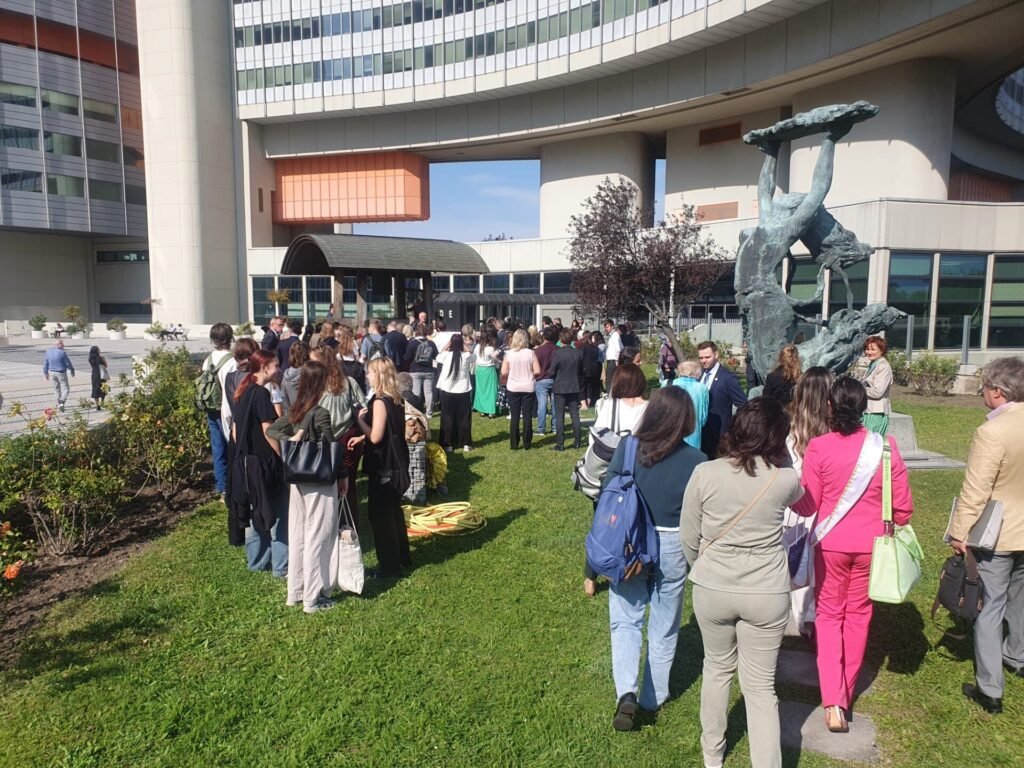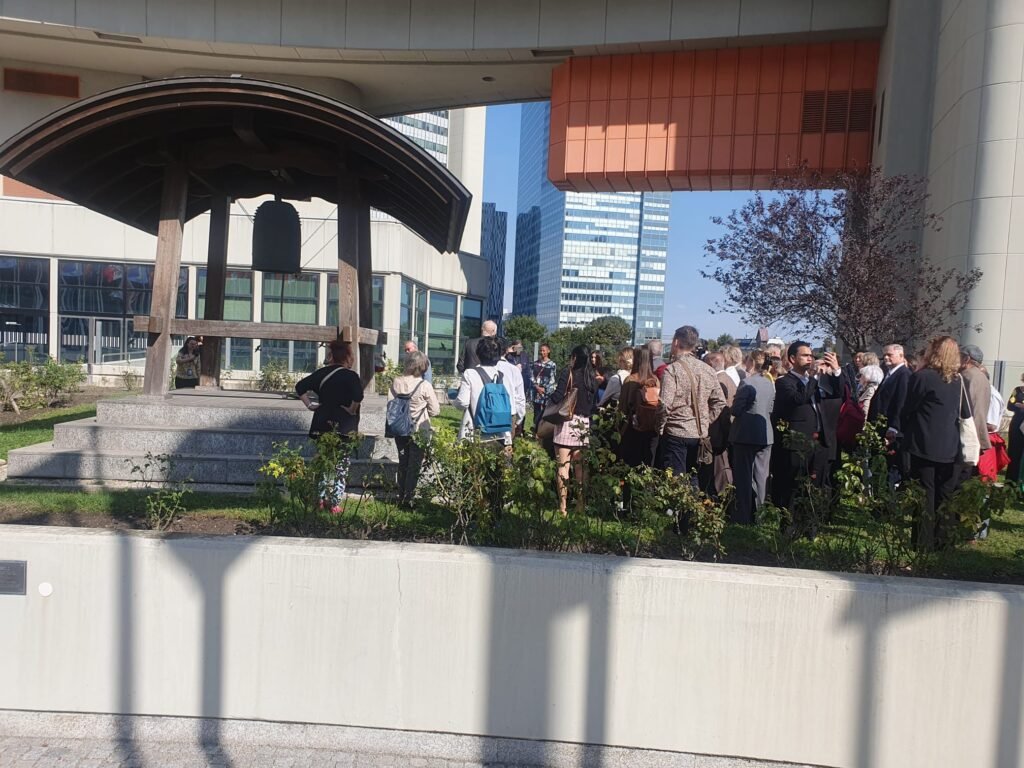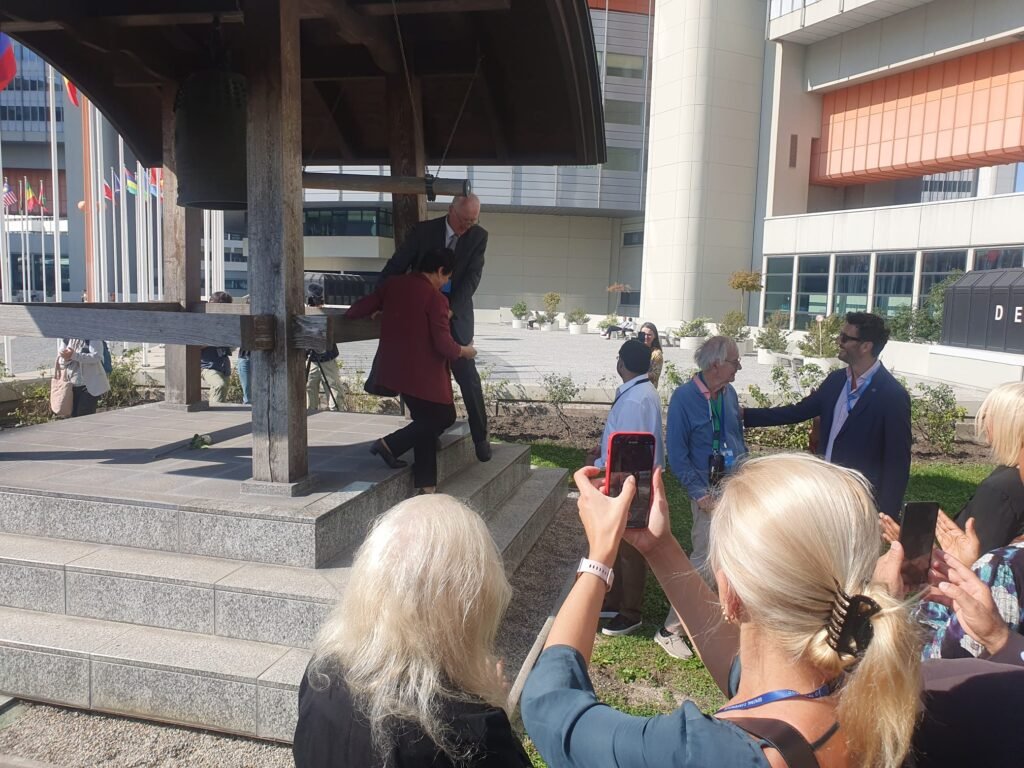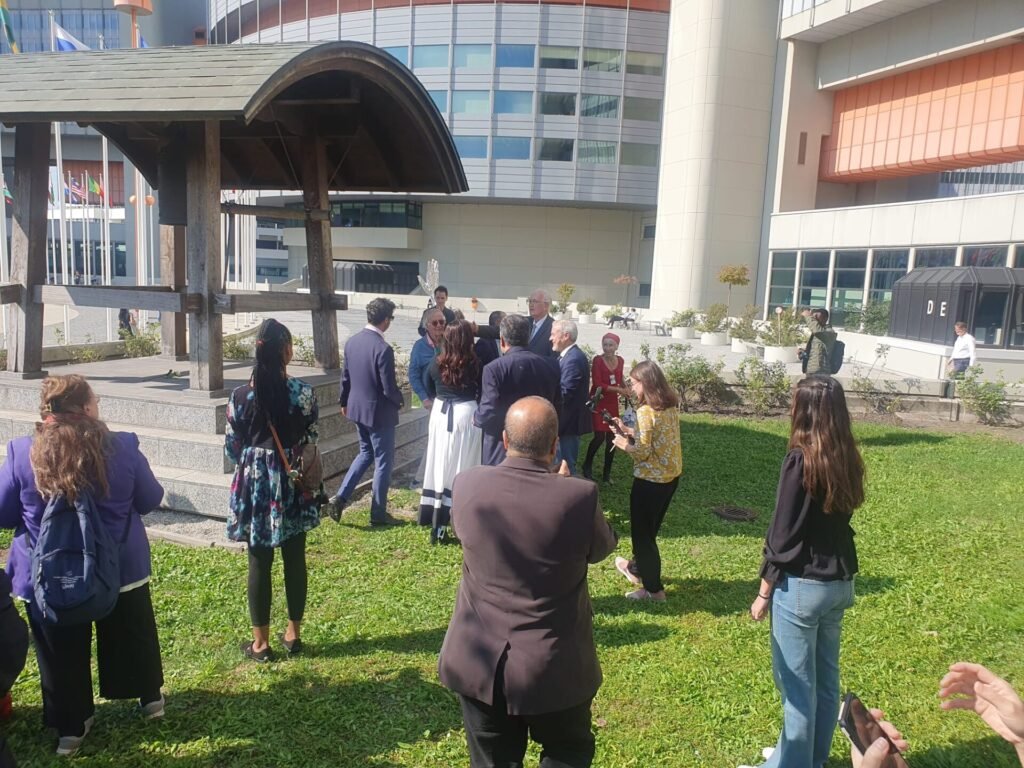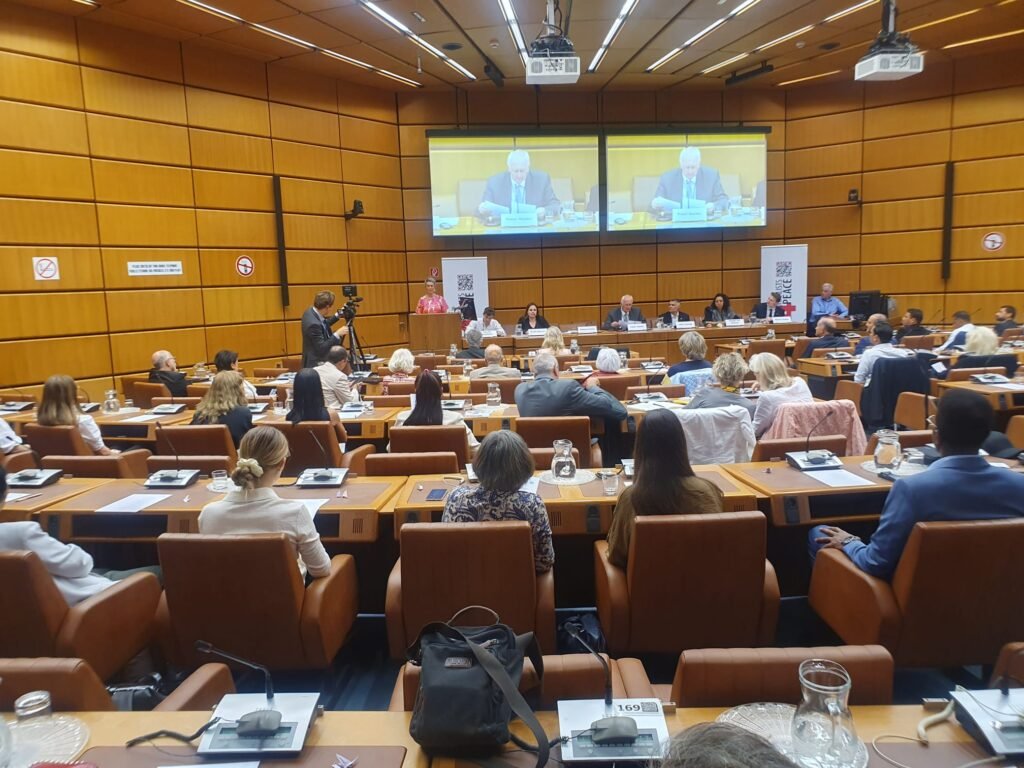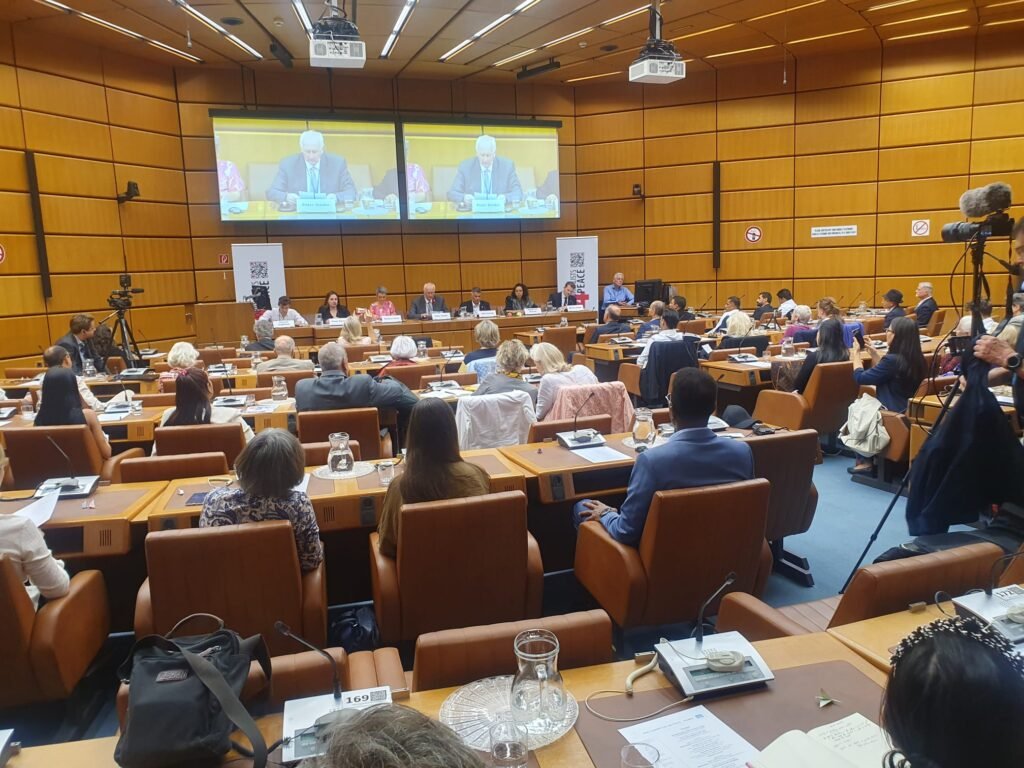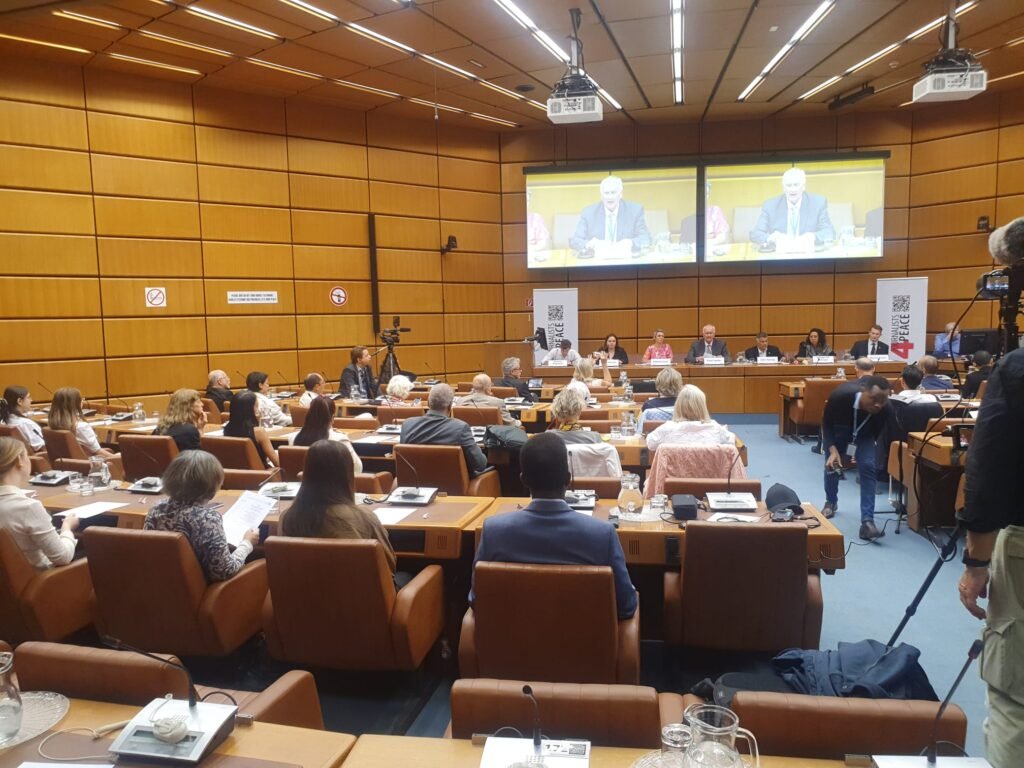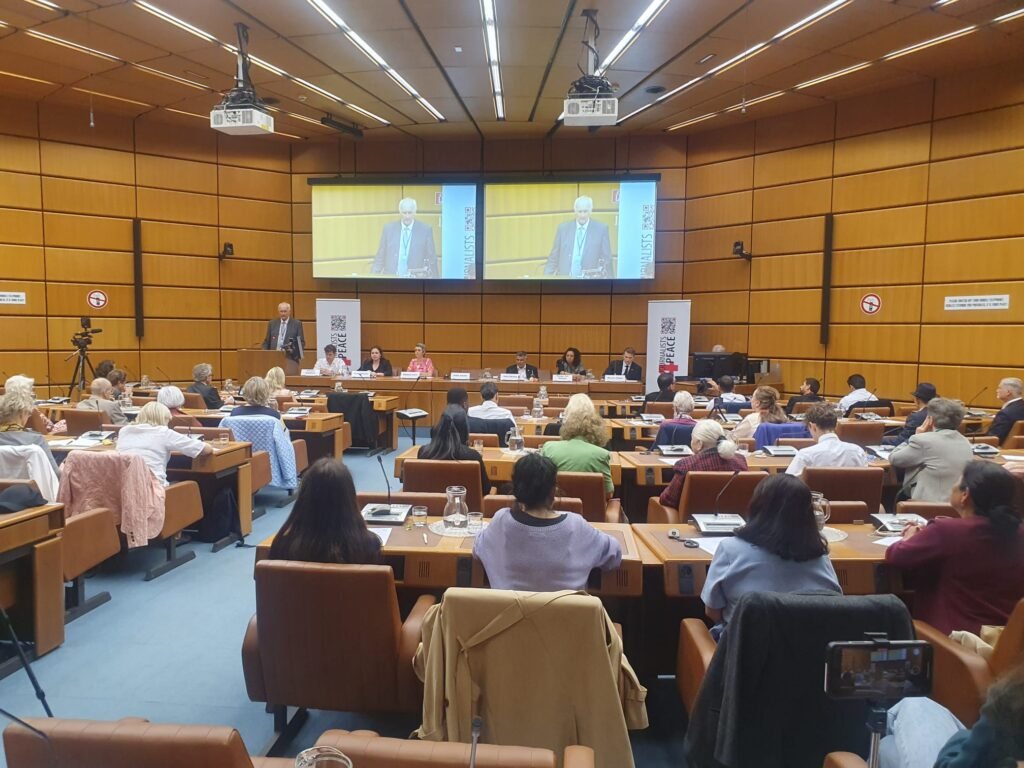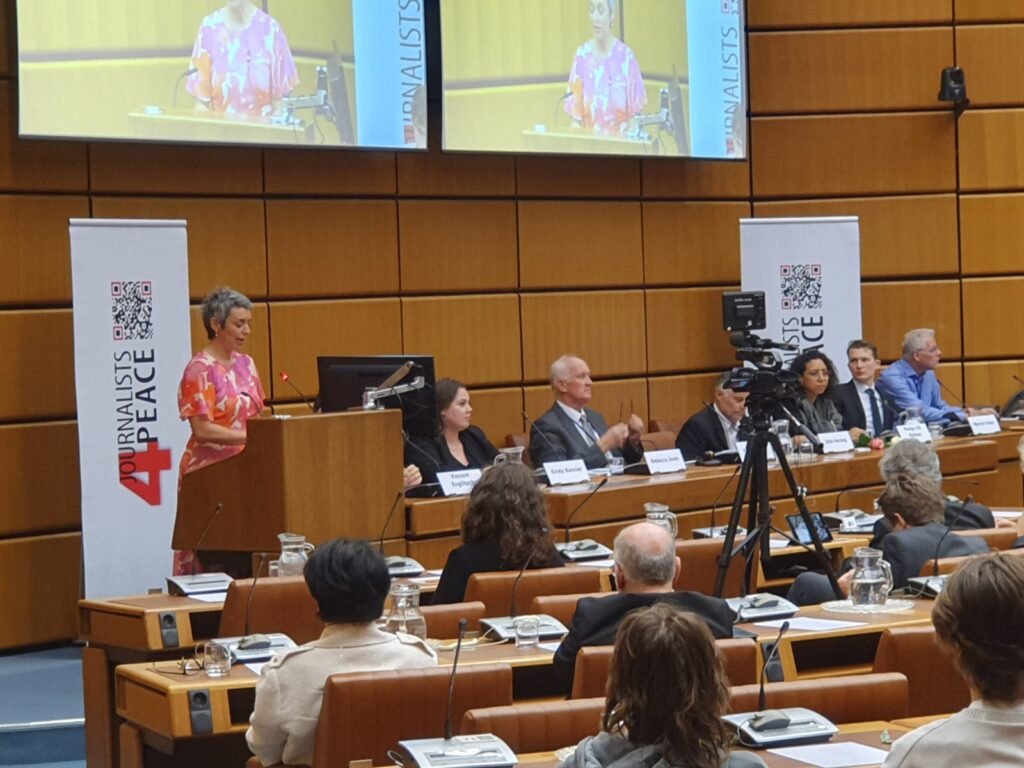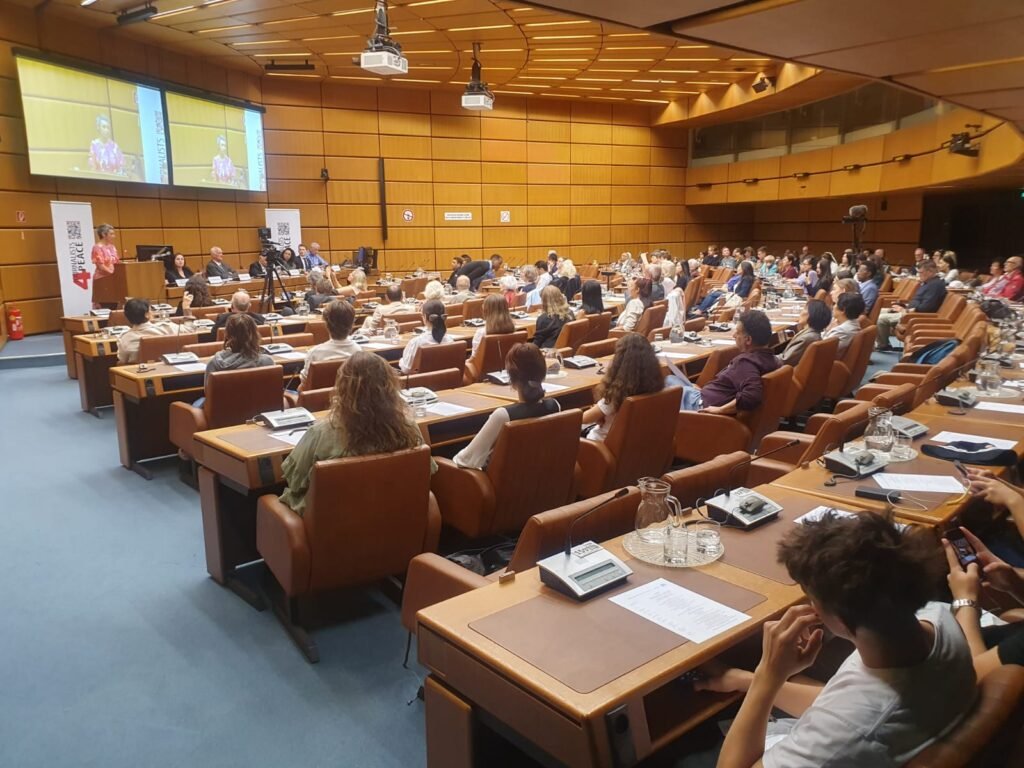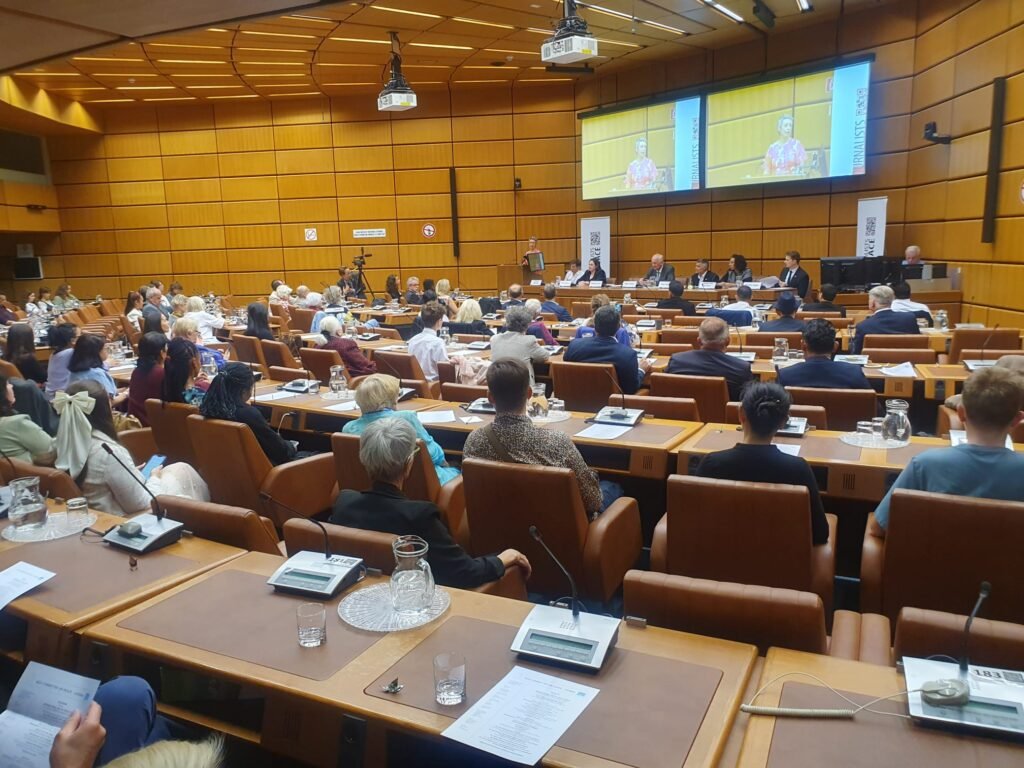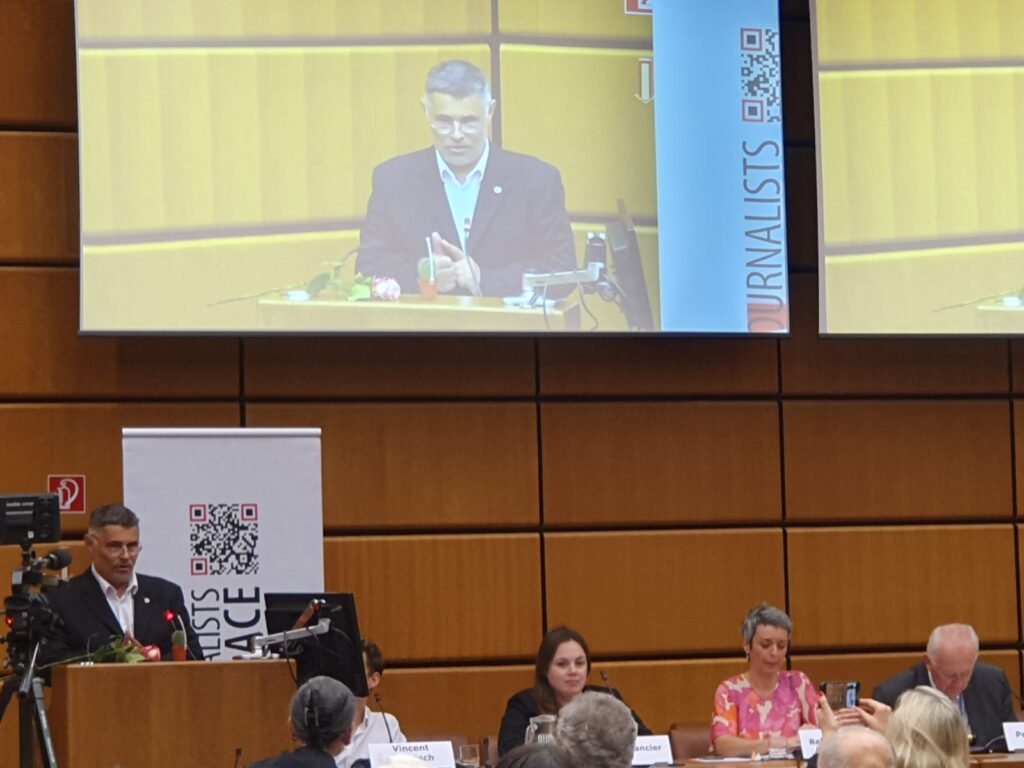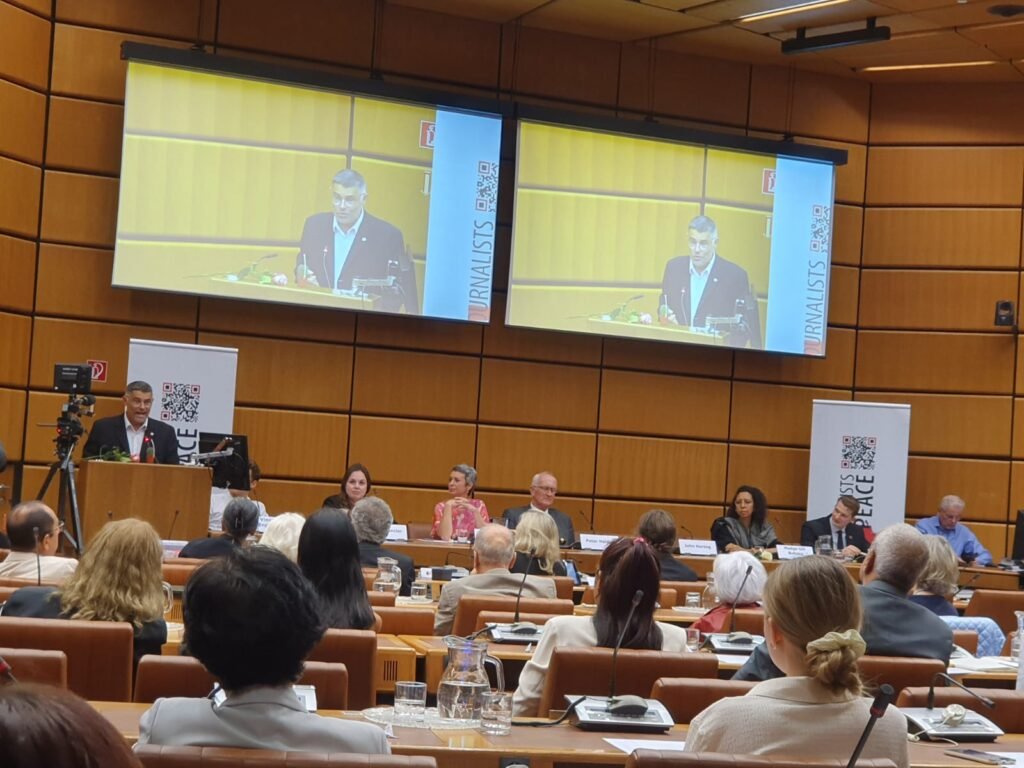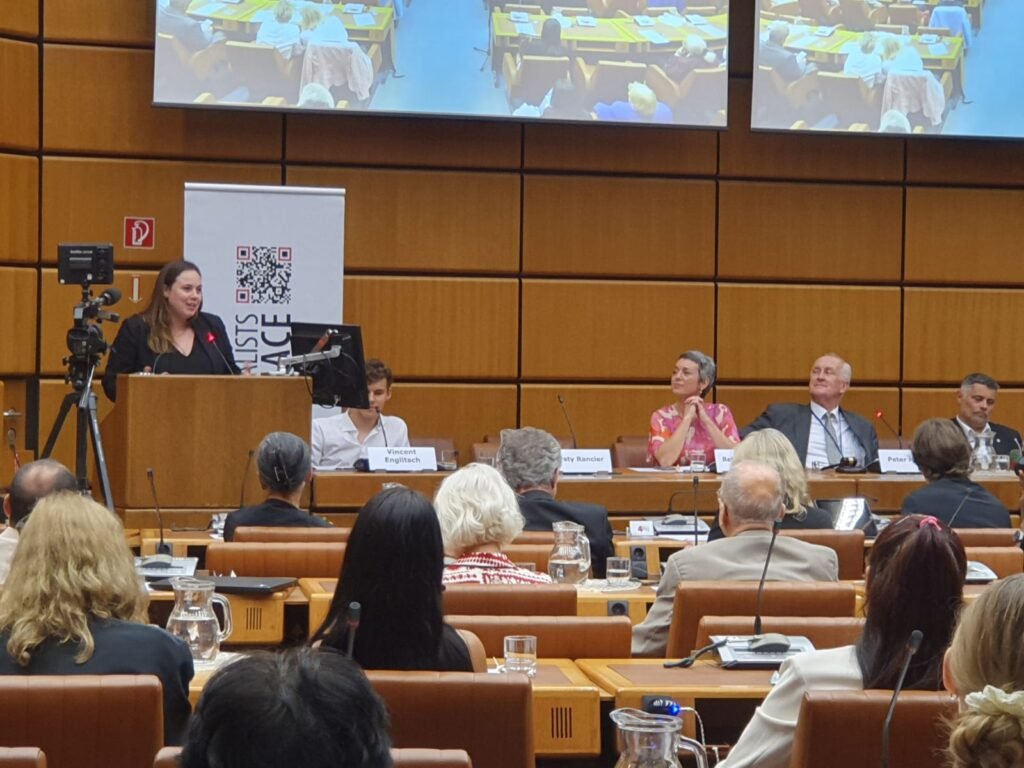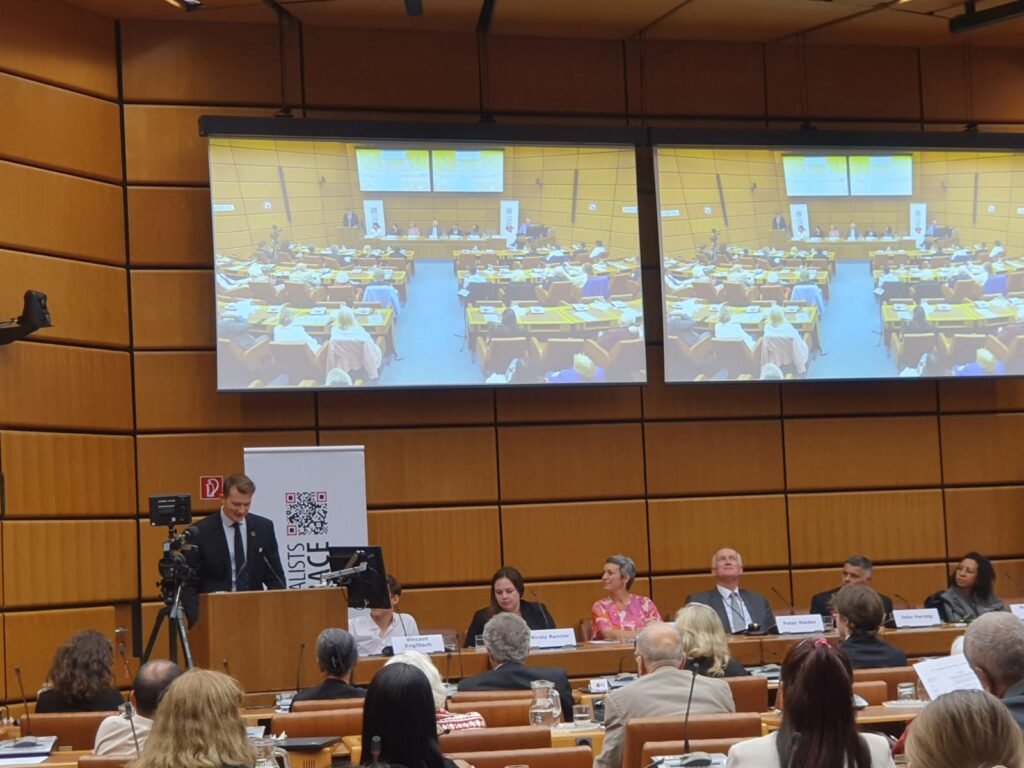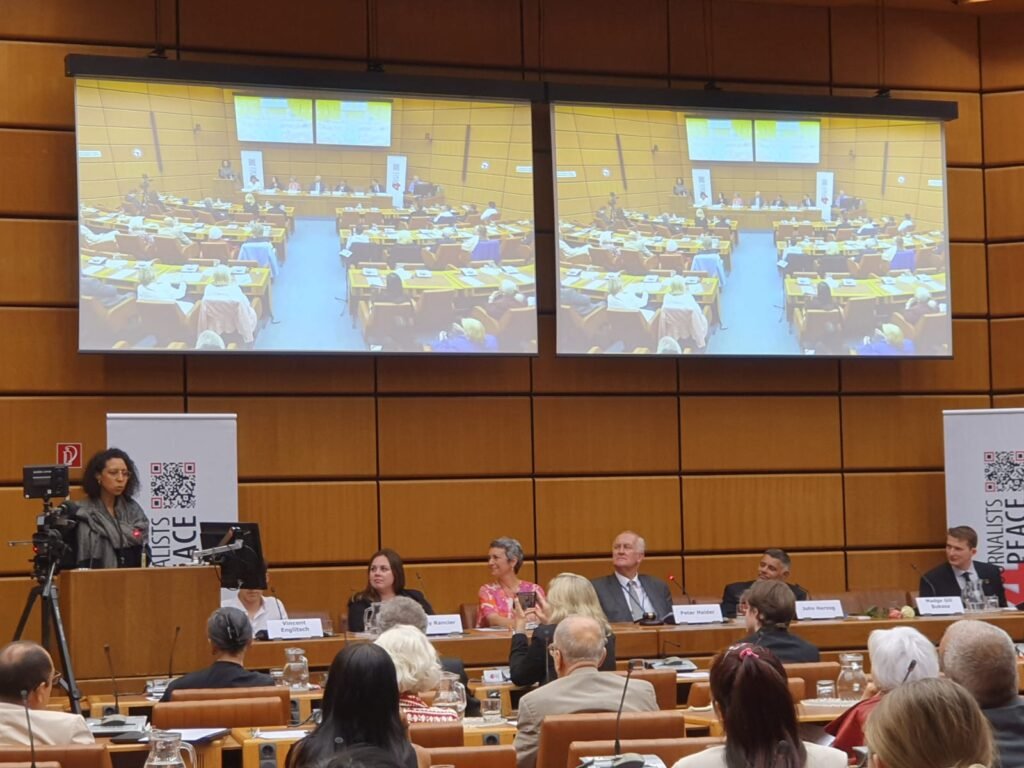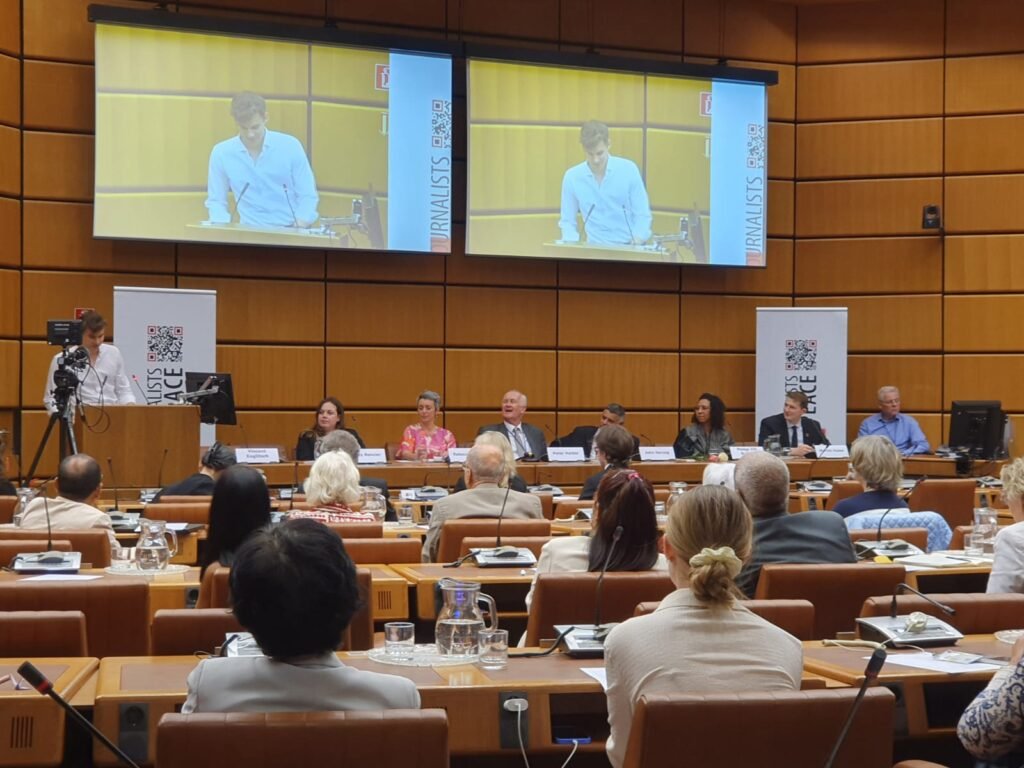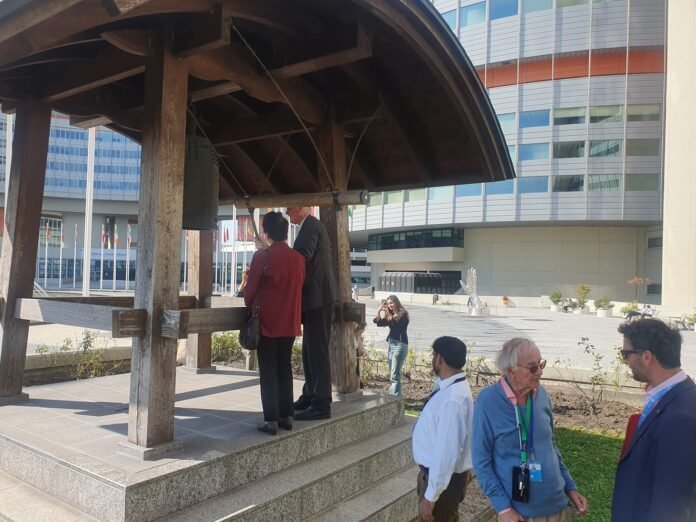Opening Ceremony at the Peace Bell
The opening ceremony at the VIC Memorial Plaza on September 20, 2024, was marked by an atmosphere of solemnity and hope, gathering representatives from various nations and organizations to commemorate peace. The highlight of this event was the ceremonial ringing of the peace bell, a symbolic act that resonates with the enduring aspiration for harmony among nations. Attendees included diplomats, peace activists, and local community members, all united in their commitment to fostering a peaceful world.
Mr. Peter Haider, who presided over the ceremony, delivered a welcoming speech that underscored the significance of the gathering. In his address, he emphasized that the bell’s ringing signified not just noise, but a clarion call for collective action against conflict and division. By reflecting on historical peace initiatives, Mr. Haider called upon participants to reaffirm their dedication to peacebuilding efforts worldwide. His words resonated deeply, encapsulating the spirit of cooperation that marked the event.
Following Mr. Haider’s remarks, Mr. Jean-Luc Lemahieu articulated the challenges facing global peace today. His statement focused on the urgent need for collaboration among nations, stressing the importance of dialogue, understanding, and mutual respect in overcoming obstacles to peace. Lemahieu’s address inspired attendees, serving as a reminder of the shared responsibilities that come with the quest for peace.
The musical performance by Ms. Neivi Martinez added a profound emotional element to the ceremony. She delivered a stirring rendition of ‘Freude schöner Götterfunken,’ a piece from Beethoven’s Symphony No. 9 that celebrates unity and joy. This performance served to elevate the atmosphere, encapsulating the collective yearning for reconciliation and harmony.
In conclusion, the opening ceremony at the Peace Bell was a powerful demonstration of the participants’ unwavering commitment to peace. Through the poignant speeches and stirring music, attendees were reminded of the critical importance of their roles in advocating for peace on both local and global levels.
Panel Discussion on Youth and Media for Peace
The panel discussion titled “Peace Needs Youth and Media,” held at the Vienna International Centre (VIC) on September 20, 2024, brought together prominent voices advocating for the integration of youth and media in peace initiatives. Opening the discussion, Ms. Rebecca Jovine emphasized the crucial role of young people in shaping a peaceful future. She remarked that the youth demographic is not just the leaders of tomorrow but also active participants in today’s narratives surrounding peace and security.
Throughout the session, various audiences shared insights on how media can serve as a tool for youth engagement in peacebuilding processes. One notable contribution pointed out that media platforms, particularly social media, have transformed the way youth communicate and mobilize. Argued that these platforms present a unique opportunity to amplify young voices, especially in conflict-prone regions. By utilizing social media effectively, youth can challenge stereotypes, advocate for peaceful coexistence, and create communities grounded in mutual respect and understanding.
Another audience, highlighted successful case studies where youth-led media initiatives facilitated dialogue and reconciliation. She discussed initiatives in various countries that utilized digital storytelling to bridge divides between conflicting groups. These examples demonstrated how media can foster dialogue and build trust, which are essential for long-term peace solutions.
The discussion underscored the potential for collaboration between young peacebuilders and media professionals in nurturing a culture of peace. As participants highlighted, creating awareness and advocating for participation in peace processes are foundational steps. Engagement from youth, supported by media frameworks, is essential to challenge violent narratives and promote positive social change.
In conclusion, the panel underscored that with the right support and resources, youth can leverage media as a strategic tool for peace, inspiring others and driving meaningful change within their communities.
Diverse Perspectives from Youth Leaders
The role of youth in advocating for peace has garnered significant attention, particularly during the recent gathering of the NGO Committee on Peace held in Vienna on September 20, 2024. A diverse group of youth leaders provided valuable insights into their unique approaches to fostering peace in their communities and beyond. Notable among them were Mr. John Herzog, Ms. Kirsty Rancier, Mr. Marvin Huber, Ms. Madge Gill Bukasa, and Mr. Vincent Englitsch, each presenting a distinct perspective shaped by their backgrounds and experiences.
Mr. John Herzog emphasized the importance of media representation in peace advocacy. He argued that the narratives presented in various media platforms significantly influence public perception of conflicts and resolutions. By promoting positive stories of cooperation and understanding, youth leaders can play a pivotal role in reshaping narratives around peace. He urged fellow activists to harness social media as a powerful tool to disseminate messages of hope and unity.
On the other hand, Ms. Kirsty Rancier focused on the imperative of strategic planning within youth-led peace initiatives. By encouraging young peace advocates to employ systematic approaches in their efforts, she highlighted how well-organized campaigns can lead to tangible results. She underscored the benefits of youth alliances, where young activists collaborate to strengthen their impact, thereby overcoming the challenges they often face due to a lack of resources and recognition.
Mr. Marvin Hubder shifted the dialogue towards communication, suggesting that effective dialogue between youth and established organizations is crucial. He noted that by fostering open lines of communication, younger leaders could ensure their voices are heard in peace processes, thereby addressing the often-ignored perspectives of their generation.
Ms. Madge Gill Bukasa and Mr. Vincent Englitsch also contributed to the robust discussion, sharing their firsthand experiences with challenges and opportunities in their respective regions. They illustrated how local contexts can shape the approach to peace advocacy, demonstrating that there is no one-size-fits-all solution for engaging youth in peace processes.
Ultimately, the insights shared by these leaders illustrate the multifaceted nature of youth engagement in peace advocacy, highlighting the critical need for inclusivity and collaboration in building a peaceful future.
Call to Action: The Importance of Peace Today
The recent gathering of the NGO Committee on Peace in Vienna underscored the urgent need for a collective commitment to peace amidst rising global tensions and conflicts. Attendees engaged in open discussions, expressing a critical understanding of the current state of violence and its profound impact on communities worldwide. The conversations were profoundly revealing, highlighting an alarming sense of urgency regarding the state of peace and security on a global scale.
As the world faces multifaceted challenges—ranging from armed conflicts to civil unrest—it has become increasingly essential for individuals, organizations, and nations to come together in the pursuit of peace initiatives. The audience’s questions and comments served as a powerful reminder that the quest for peace is not merely an aspiration but a pressing requirement for the survival and flourishing of humanity. Attendees were encouraged to recognize their roles as active participants in promoting peaceful coexistence and to take personal responsibility for fostering environments free from violence and hostility.
The discussions also emphasized the significance of ongoing dialogue and collaboration among stakeholders, including governments, civil society organizations, and grassroots movements. These conversations act as catalysts for change, inspiring individuals to advocate for policies that prioritize conflict resolution and peacebuilding. It is through combined efforts that we can effectively counter violence and promote a culture of peace.
As we reflect on the interactions from the event, it is paramount to remember that peace is a collective responsibility. Each of us has the power to make meaningful contributions to local and global peace initiatives. By engaging in discussions, supporting non-violent movements, and championing educational programs focused on peace, we can cultivate a more peaceful world. Together, we can transform the commitment to peace into a daily practice that benefits all of humanity.
